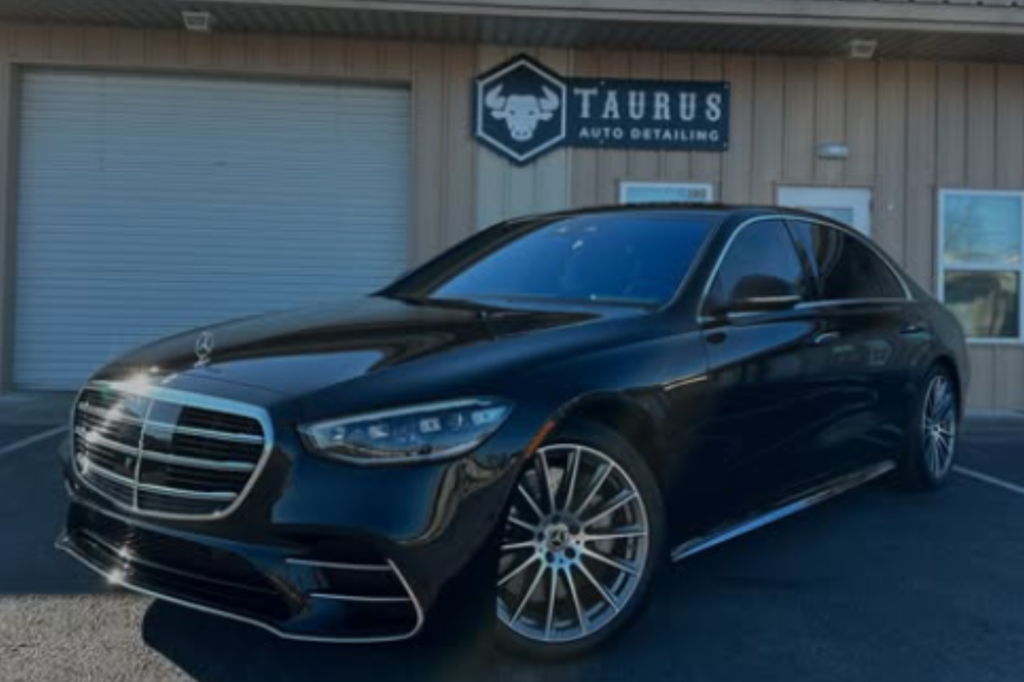When you’re considering window tinting service for your vehicle, it’s easy to focus solely on aesthetics and privacy. However, you might not realize how different tint levels can greatly impact your visibility, particularly during nighttime or in low-light conditions. Striking the right balance between style and safety is essential, and some regulations come into play as well. So, before you make a decision, it’s worth exploring how these factors interact and what might be at stake in your driving experience. What could that mean for your safety on the road?
Understanding Window Tinting
Although many drivers appreciate the aesthetic and privacy benefits of tinted windows, it’s important to understand the various aspects of window tinting before making a decision.
First, you’ll need to familiarize yourself with the different window tinting techniques. These can vary greatly regarding application and effectiveness. For instance, there are dyed films that primarily serve to reduce glare and enhance appearance, while metalized films offer additional durability and heat rejection.
Next, consider the various tinting materials available. Each type has unique properties that can impact both performance and legality. Understanding these materials can help you choose a tint that aligns with your needs and local regulations.
Don’t overlook the significance of local laws regarding window tinting. Compliance is essential, as laws dictate how dark or reflective your windows can be.
Getting a professional installation might also be worth considering, as they’ll guarantee your tint meets both aesthetic and legal standards.
Ultimately, being well-informed about the techniques and materials used in window tinting will empower you to make a decision that not only fits your style but also enhances your driving experience.
The Benefits of Tinted Windows
Tinted windows offer several distinct advantages that can enhance both your driving experience and vehicle comfort.
One of the most important benefits is UV protection. By blocking harmful ultraviolet rays, tinted windows help safeguard your skin and reduce the risk of skin cancer. This added layer of security is especially important for those who spend long hours on the road or live in sunny climates.
Another key advantage is heat reduction. Tinted windows can greatly lower the temperature inside your vehicle, making your drive more comfortable, especially during the hot summer months. This not only enhances your comfort but also reduces the load on your air conditioning system, potentially leading to better fuel efficiency.
Privacy enhancement is another valuable benefit. Tinted windows can provide an extra level of security by obscuring the view into your vehicle, making it harder for potential thieves to see valuables left inside. This sense of privacy can create a more relaxed atmosphere while driving, allowing you to focus on the road without distractions.
Lastly, glare reduction is a vital factor in improving driving safety. Tinted windows can minimize the sun’s glare, making it easier for you to see the road clearly. This can help reduce eye strain and improve overall visibility, particularly during sunrise or sunset when glare is most prominent.
Together, these benefits make tinted windows an appealing choice for anyone looking to enhance their driving experience while prioritizing comfort and safety.
Tint Levels Explained
When considering the advantages of tinted windows, understanding the various tint levels is important for maximizing their benefits. Tint percentage refers to how much light is allowed to pass through the window film, greatly influencing both aesthetics and functionality. A lower rate means a darker tint, which can provide greater privacy and heat reduction. However, it’s essential to check your local laws to verify compliance.
Color variation also plays a vital role in your choice of tint. While traditional shades like gray and black are popular, other hues like bronze or green can enhance your vehicle’s look while offering unique benefits. For instance, lighter tints might reduce glare without completely obstructing visibility.
Choosing the right color and tint percentage can create a balance between style and performance. As you explore options, consider how different tint levels can affect your driving experience. A darker tint may offer more UV protection and heat reduction, but it can also create challenges in low-light conditions.
Alternatively, a lighter tint might provide clearer visibility while still offering some comfort benefits. Ultimately, understanding tint levels allows you to make an informed decision that aligns with your lifestyle, guaranteeing you enjoy both the aesthetic appeal and practical advantages of tinted windows.
Impact on Visibility
While choosing a window tint can enhance your vehicle’s aesthetics and comfort, it’s important to take into account how it affects visibility. The level of tint you select directly impacts your visibility perception while driving. A darker tint can obscure your view, particularly at night or in low-light conditions. This can make it challenging to see pedestrians, cyclists, or other vehicles, potentially leading to hazardous situations.
On the other hand, the right tint can offer significant glare reduction, making your driving experience more comfortable. Glare from the sun or oncoming headlights can distract you and impair your ability to see clearly. By choosing a tint that balances darkness with visibility, you can enjoy the benefits of reduced glare without compromising safety.
Remember, it’s not just about aesthetics; your tint choice should prioritize your ability to see and be seen. A tint that’s too dark may give a sleek look but could hinder your visibility perception, especially in critical moments. It’s vital to find a tint level that allows you to maintain awareness of your surroundings while enhancing your driving comfort.
Ultimately, the goal is to create a safe driving environment for yourself and others on the road. By carefully considering how different tint levels impact visibility, you can make an informed decision that harmonizes style with safety, ensuring you feel connected and confident behind the wheel.

Legal Regulations on Tinting
Before selecting a window tint, it’s crucial to understand the legal regulations that govern tinting in your area. Tinting laws can vary markedly from one state or region to another, so knowing the specific rules can save you from potential fines and complications.
For instance, some states allow darker tints on rear windows but may impose stricter limits on front-side windows. You’ll want to check the percentage of visible light transmission (VLT) that’s permitted, as this is a key factor in determining legality. Many jurisdictions require a minimum VLT percentage to guarantee driver visibility, and not adhering to these regulations could lead to enforcement practices that involve fines or even mandatory removal of the tint.
Moreover, law enforcement practices can differ. In some areas, police may conduct random checks for compliance, while others might only address tint violations during traffic stops for unrelated offenses. Knowing this could influence your choice of tint.
It’s also wise to be aware of any additional regulations, such as the types of materials used or the need for certification labels. Understanding these aspects not only fosters a sense of belonging to a community that values compliance but also guarantees your driving experience remains trouble-free.
Ultimately, staying informed about tinting laws and enforcement practices will help you strike the right balance between style and legality, allowing you to enjoy the benefits of tinted windows without the worry of legal repercussions.
Safety Considerations
Although tinted windows can enhance your vehicle’s aesthetic appeal, it’s critical to recognize their impact on safety. When considering window tinting, you need to be aware of how it affects visibility and overall driving conditions. While darker tints may seem appealing, they can considerably reduce your ability to see clearly, especially during low-light situations or at night.
One of the primary safety benefits of proper window tinting is glare reduction. Excessive glare from sunlight can impair your vision and increase the risk of accidents. Quality tints can minimize this glare, allowing for a clearer view of the road and surroundings. This reduction in glare is essential for maintaining focus and guaranteeing that you can react quickly to potential hazards.
However, it’s important to strike a balance. Too dark of a tint can hinder your ability to see pedestrians, cyclists, or animals that may unexpectedly cross your path. This can lead to dangerous situations where accident prevention becomes challenging. You want to confirm you have a tint that complements safety without sacrificing style.
Moreover, consider how tinted windows may affect other drivers’ perceptions of your vehicle. If your windows are too dark, it can lead to misunderstandings, potentially escalating road rage incidents, or aggressive driving behavior.
Prioritizing visibility and safety benefits everyone on the road, so think carefully about the tint levels you choose. It’s not just about how your car looks; it’s about driving responsibly.
Choosing the Right Tint
Selecting the right window tint in Austin TX, involves more than just personal preference; it requires careful consideration of various factors that influence both safety and legality. When choosing your tint options, first and foremost, you should check your local laws regarding permissible tint levels. Each state has its regulations, and violating them could lead to fines or the need to remove the tint altogether. By making an informed choice, you can enhance your vehicle’s aesthetics while staying compliant and ensuring a safe driving experience.
Next, think about your driving habits and environment. If you often drive in bright sunlight or areas with high glare, a darker tint may offer added comfort. However, remember that darker tints can reduce visibility, especially at night or during inclement weather. Finding the right balance is essential for your safety and that of others on the road.
Application techniques also play a significant role in the effectiveness of your tint. Professional window tint installation is generally recommended to guarantee that the tint adheres properly and doesn’t bubble or peel over time. DIY kits might seem appealing, but they often lack the quality and precision that a professional service provides.
Consider the type of film as well—there are dyed, metalized, and ceramic options, each with distinct benefits and drawbacks. Evaluating these choices regarding heat rejection, UV protection, and aesthetics can help you make a well-informed decision.
Ultimately, the right tint should enhance your driving experience while keeping you compliant and safe on the road.
Maintenance of Tinted Windows
Maintaining tinted windows is vital for guaranteeing their longevity and effectiveness, especially since improper care can lead to fading, bubbling, or peeling. You want your investment to last, and that starts with proper tint care. Regular maintenance not only preserves the aesthetic appeal but also maintains functionality, such as UV protection and glare reduction.
First off, when cleaning your tinted windows, it’s important to use the right cleaning techniques. Avoid ammonia-based cleaners, as they can damage the tint film. Instead, opt for a gentle soap and water solution or a vinegar-based cleaner. Always use a soft cloth or microfiber towel to prevent scratching the surface.
Make sure to clean the windows in a shaded area to avoid streaks caused by the sun’s heat.
In addition to regular cleaning, inspect your tinted windows for any signs of damage. Look for bubbles or peeling edges, as these can indicate issues with installation or the film itself. If you notice any problems, consult a professional for repairs.
Finally, don’t forget about the interior! Keeping your car’s interior clean and free from harsh sunlight can also help maintain the integrity of your window tint. Using window shades when parked can further protect from UV exposure.
Common Myths About Tinting
When considering window tinting, many misconceptions can cloud the decision-making process. One prevalent myth is that darker tints always reduce visibility. In reality, visibility is more about the quality of the tint than its darkness. High-quality tints can provide excellent UV protection and glare reduction without greatly impairing your ability to see the road or your surroundings.
Another common misconception is that all window tints are illegal. In truth, each state has specific regulations regarding tint levels. Knowing your local laws can help you avoid unnecessary fines and guarantee you’re complying while enjoying the benefits of tinting.
Many also believe that window tinting leads to overheating inside a vehicle. However, effective window films can actually reflect heat and keep your car cooler, which can be particularly beneficial on sunny days. This myth debunking helps alleviate concerns about comfort and energy efficiency.
Finally, some individuals worry that tinted windows cause perception issues, particularly at night. While it’s true that darker films can make nighttime driving a bit more challenging, most quality tints are designed to minimize this effect. Proper installation and choosing the right tint can enhance safety rather than hinder it.
Review
To sum up, while tinted windows can enhance your driving experience, it’s crucial to choose the right tint for safety and visibility. Did you know that studies show that drivers with dark tints report difficulty seeing at night? This underscores the importance of balancing aesthetics with practicality. By working with Taurus Auto Detailing to comply with local regulations and select quality films, you can enjoy the benefits of tinting while ensuring a safer driving environment for yourself and others on the road.


